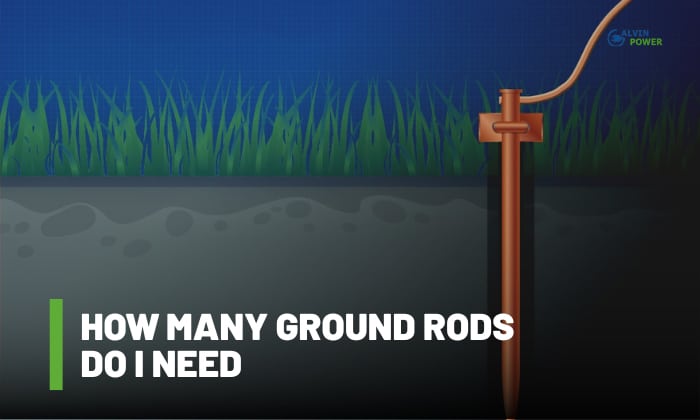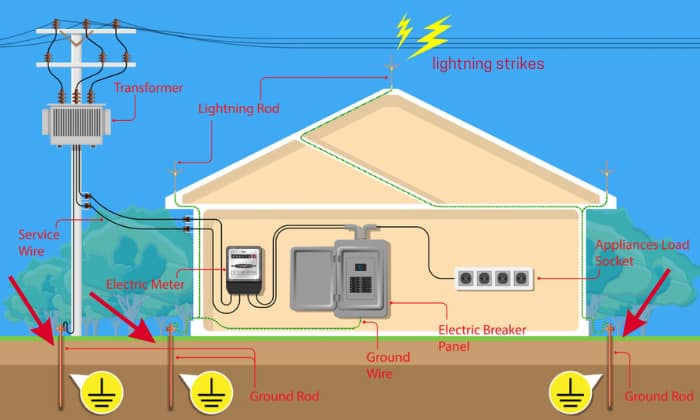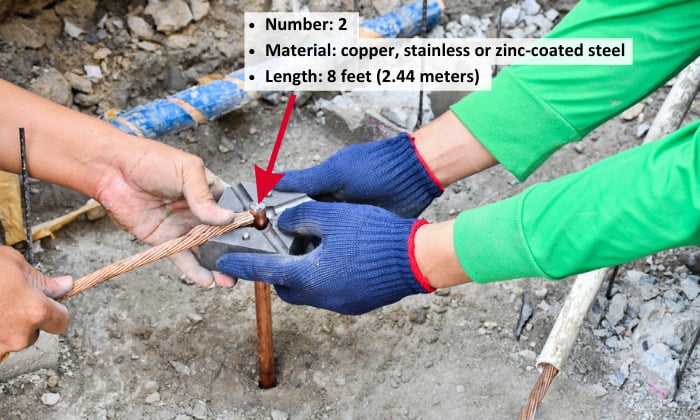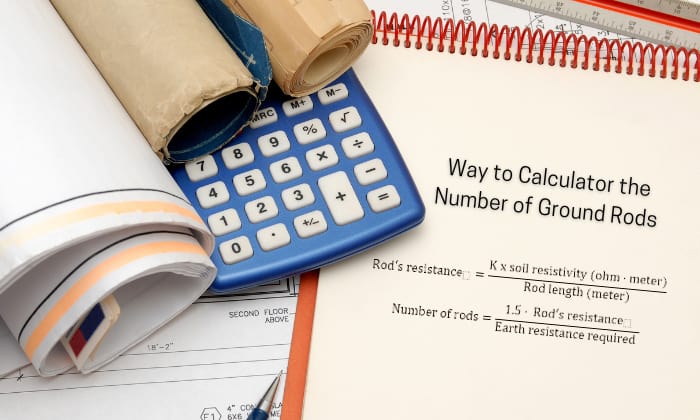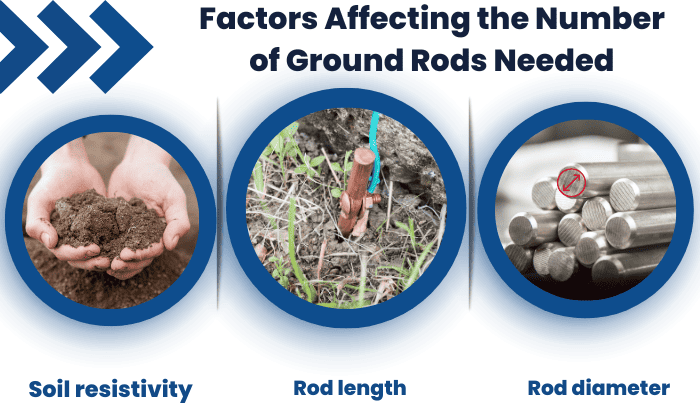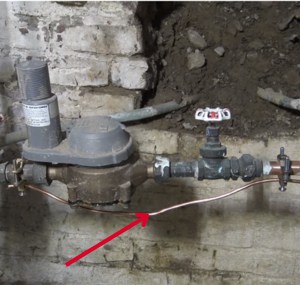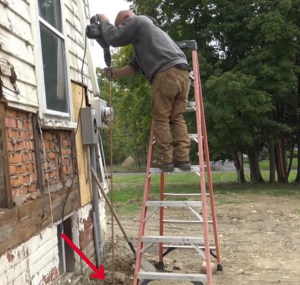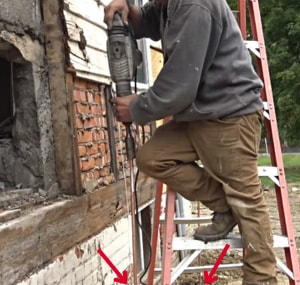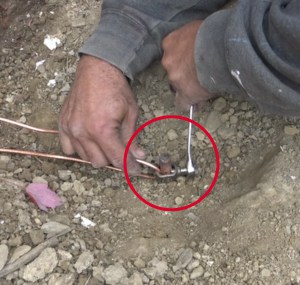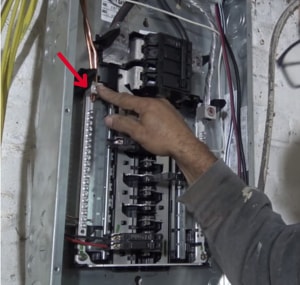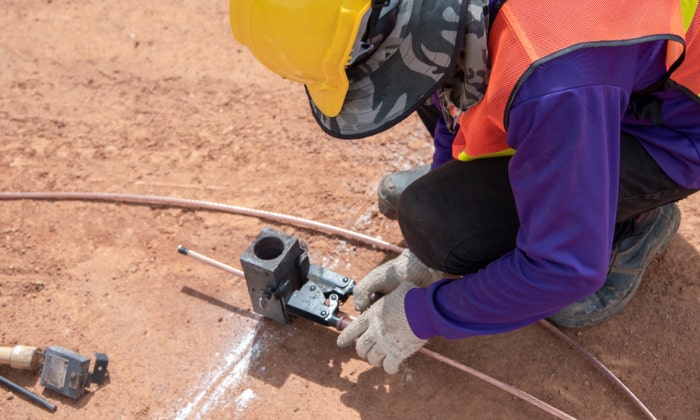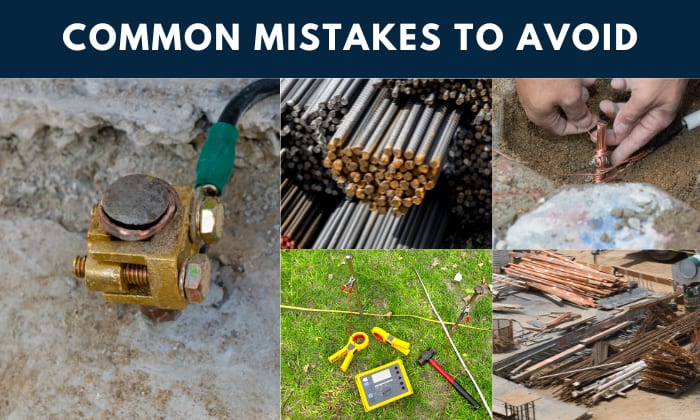Ground rods protect your appliances and equipment from external electrical surges like lightning strikes. They are metal rods installed outside a house or building and redirect lightning to earth.
If you ask yourself, “How many ground rods do I need,” just remember that you generally need 2 ground rods for your house or building. Some industries need additional ground rods to meet their desired earthing resistance.
Table of Contents
Overview of Grounding Rods
If lightning strikes your home, it can cause a surge and damage most of your plugged electrical appliances. Worse, it may lead to a fire.
Electric ground rods can protect your appliances from lightning strikes and other electrical surges. They provide a path of least resistance for lightning to reach the ground.
Number of Ground Rods
The US National Electric Code of 2023 requires a minimum of two ground rods made of copper, stainless or zinc-coated steel, and must be at least 8 feet (2.44 meters) long. They should also be at least 5/8 inches (15.87 millimeters) thick unless they have a listed rating, and should be installed at least 6 feet apart.
Regulations do allow the use of one ground rod if it has a proven resistance of 25 ohms or less. However, a lot of local code requirements stick to using 2 ground rods for house electricals.
Multiple ground rods can be placed into the ground if needed. Complex grounding systems are needed for electrical substations, cell sites, petro-chemical facilities, and other industries.
Calculating the Number of Ground Rods
We can get a rough estimate of how many ground rods are needed using these two equations:
where each rod will be installed 3 to 4 meters apart, and K is a constant that depends on the ratio between the rod’s length and its diameter:
\[ K = \begin{cases}
0.75 & \text{if } 25 < \frac{\text{(rod length)}}{\text{(rod diameter)}} < 100 \\
\end{cases} \]
\[ K = \begin{cases}
1 & \text{if } 100 < \frac{\text{(rod length)}}{\text{(rod diameter)}} < 100 \\
\end{cases} \]
\[ K = \begin{cases}
1.2 & \text{if } 600 < \frac{\text{(rod length)}}{\text{(rod diameter)}} \\
\end{cases} \]
For example, if we want to know how many rods we need to reach a grounding resistance of 5 ohms with soil resistivity of 100 ohm-meters using 10 foot rods (3.048 meters) that are ¾” (0.019 meters) thick, we first get K:
So K = 1. Then, we get the earthing resistance of a single rod:
\[ \text{{Number of rods}} = \frac{{1.5 \times \text{{Rod’s resistance (ohm)}}}}{{\text{{Resistance required (ohm)}}}} = \frac{{1.5 \times 32.8}}{5} = 9.84 \approx 10 \text{{ rods}} \]
Factors Affecting the Number of Ground Rods Needed
1. Soil resistivity
Some soils have higher resistance than others and can easily make grounding systems more complex. Farm soil can have a soil resistivity of 100 ohm-meters, while dry sand can have as much as 1000 ohm-meters.
2. Rod length
Longer rods can lower the ground resistance up to 40% to reduce the number of rods. Dry soil on the surface is not conductive enough, especially in sandy places, and going deeper can help you reach more conductive soil.
3. Rod diameter
The rod diameter has a small influence on the number of rods. Doubling the thickness of the rod will give you a 10% reduction in ground resistance. Between 1/2 or 5/8 ground rod sizes, choose the 5/8” size.
Other Considerations
Grounding system designs can use more complex equipment to meet different facilities’ needed resistance. They can be a system of ground rods, ground plates, ground rings and grids.
Electrical engineers can design these complex grounding systems to meet resistance requirements. Consult them if you don’t know much about ground rods electrical code.
Grounding conductors are another consideration. Good grounding conductors can direct a surge to the ground rod faster. They are usually made with copper or with copper-bonded steel.
Also, the grounding connections should be checked. They can be mechanical connections like bolts or permanent connections through welding based on the engineer’s recommendations.
Ground Rod Installation
We’ll focus on the steps and techniques on how to install ground rods at home. Make sure you have the rods based on the installation requirements we talked about earlier.
Step 1: Attach 4-gauge wire to the main conductive water pipe to bond the house to the panel. Attach the other end to the grounding bus bar.
Step 2: Choose a spot to install the first ground rod. Dig a hole on that spot and drive the rod into the hole. A good spot to install the first ground rod is at least 1 foot from the service panel.
One technique to drive the grounding rod fast is with the use of a big hammer drill. This can save you a lot of time and effort.
Step 3: Install the second rod. The second ground rod location must be at least 6 feet from the first. Dig a hole and use the hammer drill to easily drive the second rod into the ground.
Step 4: Use another set of 4 gauge wires and thread it through the acorn clamp. Secure the acorn clamp to the ground rod with a wrench. Bury the hole after installation.
Step 5: Thread the new wire to reach the panel. Screw the grounding wire to the grounding bus bar. Make sure it’s installed tight.
Tips for Optimizing Ground Rod Effectiveness
Use the following tips to make your ground rods deliver surges effectively:
- Increase the distance between the two ground rods.
- Find a spot on the ground that has fewer rocks and gravel.
- Ask an inspector to check your installation to see if it’s up to code.
Common Mistakes to Avoid
Avoid the following mistakes to make your ground rods work as intended:
- Using a single ground rod without testing for 25 ohms when two ground rods are needed.
- Using the wrong ground conductors
- Leaving excess ground wires uncut and coiled
- Installing ground rods at locations with high soil resistivities
- Using cheaper steel materials for the ground rods
Frequently Asked Question
Can I add more ground rods to improve safety?
Yes, you can. Some industries need more than two rods, just like what we saw from the sample calculation, especially if they need to bring down the resistivity to 5 ohms or less.
How far apart do ground rods need to be?
They need to be at least 6 feet apart. But you can place them farther at 16 feet apart to improve their effectiveness.
Do the grounding rods need to be different for a 100 amp service, for 200 amp service, and for a 400 amp service?
No, they don’t. All three service panels in a residential setting will need at least 2 ground rods, except in the circumstance described above (the rod has very low resistance).
When is a ground rod required?
All residential electrical connections must have a grounding rod. The rod should be resistant to corrosion to ensure longevity and effectiveness.
Conclusion
You need at least two ground rods at home if you’re wondering, “How many ground rods do I need?” But some industries would require more to bring the earthing resistance down to safe levels.
Ground rods can save you the money and effort from replacing your damaged appliances due to an external surge. As long as the ground rods are properly installed and spaced, you can protect yourself from surges like lightning strikes.

I am Edwin Jones, in charge of designing content for Galvinpower. I aspire to use my experiences in marketing to create reliable and necessary information to help our readers. It has been fun to work with Andrew and apply his incredible knowledge to our content.

